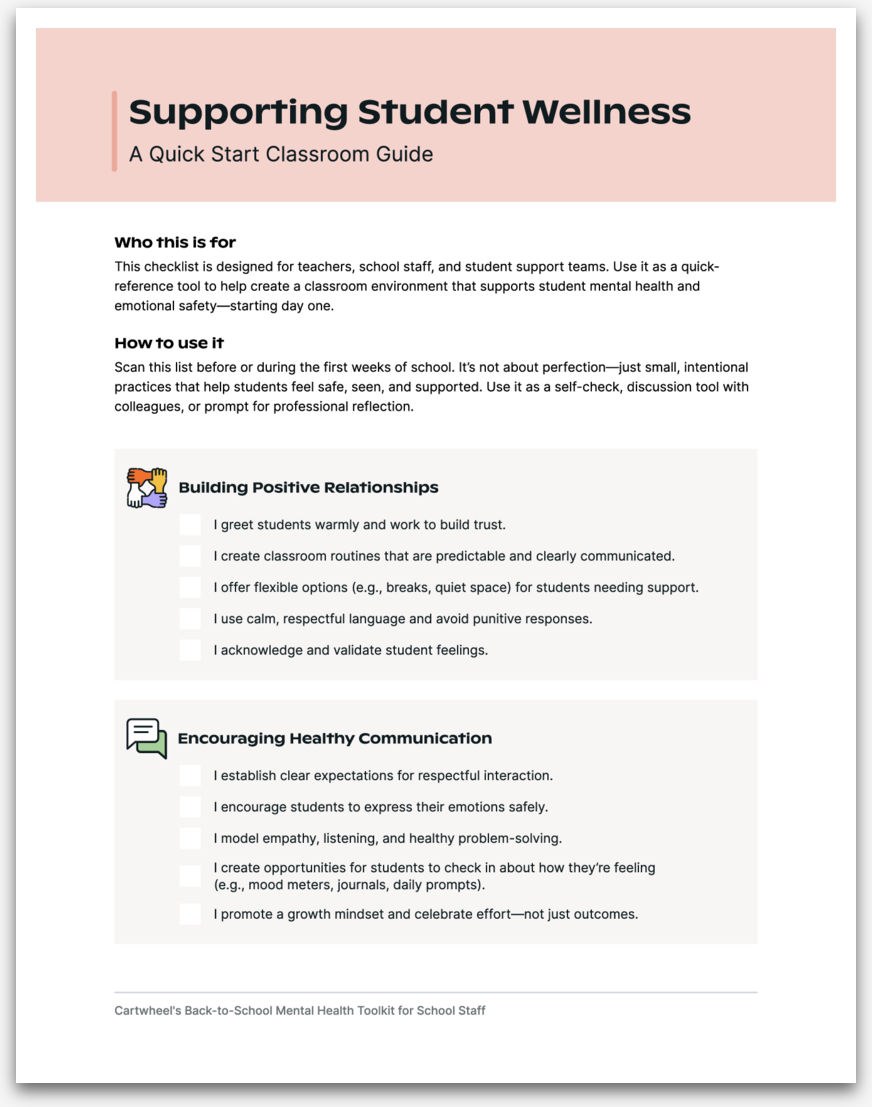Social media and its effects on youth mental health are on everyone’s mind. Last spring, the US Surgeon General released an advisory on the topic. More recently, Instagram announced new features aimed at addressing inappropriate content and improving sleep for teens.
While social media isn’t likely to go away anytime soon, there are ways you can help shape your kids' relationship with it.
To get a better understanding of what to know and what to do when it comes to social media and your kids, keep reading for advice from Dr. Ilan Shapiro, a pediatrician and an ambassador for the American Academy of Pediatrics (AAP) Center of Excellence on Social Media and Youth Mental Health.
Is Social Media Really That Bad?
The short answer: it depends. While there is data out there suggesting that social media can negatively impact the mental health of youth, there’s also data proving some positive benefits of engaging with the platforms.
According to Dr. Shapiro, the popular narrative that social media is inherently bad can lead to shame and guilt around usage, which doesn’t lead to healthy behaviors, conversations, or self-efficacy.
“Social media is not the only potentially risky activity we allow and encourage kids to partake in as part of their development. These risks are not universal to all kids and are not driven by a single measure of screen time,” says Dr. Shapiro.
The Negatives of Social Media
In a survey conducted by the American Psychological Association, 41% of teens with the highest social media use (more than five hours a day) rated their overall mental health as poor or very poor, compared with 23% of those with the lowest use.
According to the Surgeon General’s report, children and adolescents who spend more than three hours a day on social media face double the risk of mental health problems, including experiencing symptoms of depression and anxiety.
However, according to Dr. Shapiro, teens often also have other factors that put them at increased risk for mental health issues, such as a less supportive home environment, less connection to parents, and parent social media use.
The Positives of Social Media
On the flip side, many teens say social media has a positive impact on their lives, including giving them a platform to stay socially connected to friends and family, as well as serving as a place for self-expression, which in turn can lead to increased self-esteem.
In a 2022 survey of American teenagers and their parents by the Pew Research Center, which showed that a majority of respondents felt that social media helps teenagers feel more accepted (58%), like they have people who can support them through tough times (67%), that they have a place to show their creative side (71%), and that they are more connected to what’s going on in their friends’ lives (80%).
Better Measures of Social Media Use
Rather than looking at social media as all bad, it’s better to focus instead on how adolescents are using it, not if. You can look at the following as examples of measuring whether social media use is harmful or not.
- Passive vs. active social media participation
- Frequency of bullying/toxic content
- Exposure to idealized body/beauty content and body dissatisfaction
- Evening/long hours and poor sleep
- Civic engagement and affirming communities for youth from marginalized groups
A New Social Media Narrative
While there is reason to be concerned about the mental health crisis amongst adolescents, the way we are talking about it can cause parents and caregivers to feel overwhelmed and teens to shut down. Good decisions that work for families are not often made from a place of shame or fear.
Here are some alternative ways of examining social media use, according to Dr. Shapiro and the AAP’s Center of Excellence on Social Media and Youth Mental Health.
The 5 Cs
The AAP’s Center of Excellence on Social Media and Youth Mental Health developed the 5 Cs with guidance for each age group. Each guide includes information about the developmental stages kids are going through and how this influences media use. They also describe healthy media habits to strive for at home.
The 5 Cs are designed to meet kids, teens and parents where they are, build insight and communication skills, and motivate for healthy behavior change.
Child: Because children are all different, they don't each have the same risks and benefits from media. We encourage parents to think:
- Who is your child, what is their personality? And how does this influence what media they are attracted to, and how it affects them?
- Do they seek out wild content on video platforms, or does media help support a special artistic or musical talent?
- Is social media feeding their social anxiety, or do they have a supportive friend group online?
Content: Research shows that content quality shapes whether kids have positive or negative relationships with media. Learn about what your kids play or watch. Help them think about which videos and games they use that have too much violence, rude role-modeling, unrealistic beauty standards or commercialism.
Although these things "trend" on social media, they can influence kids' emotions and behavior. To find good replacement videos and games, Common Sense Media is a great resource.
Calm: All kids need to learn strategies for how to manage strong emotions or fall asleep at night, and sometimes media becomes their main go-to strategy. If this is the case, talk to friends, pediatricians, therapists or other supports for other ways to calm their brains and bodies down.
Crowding Out: Depending on how much media your family is using and what time of day, it might be crowding out other things your family cares about.Rather than just focusing on reducing screen time, help your family think about what they want to get back—such as family quality time, more sleep, going to the movies, playing with pets or time outdoors. Help kids recognize that digital media has lots of "hooks" that keep us online longer than we intended. That's why it helps to have a plan about when and where media is used every day.
Communication: Talk about media early and often. This is one way kids build digital literacy, and it helps you identify when your child or teen is struggling. It's normal to find this a stressful topic, so take a deep breath, try to be open-minded and ask questions. This helps reduce guilt and increases your problem-solving mindsets.
Reminders About Problematic Internet Use
While “addiction” terminology may frequently be used to describe problematic technology use, it’s not an accurate way to describe teens’ experiences with social media, says Dr. Shapiro.
When youth experience problematic use of social media, it’s more of a broad range of challenges they experience; addictive behaviors are only at the extreme end of that spectrum.
Many interactive technologies are specifically designed to capture and hold a user’s interest, and it can be hard for youth to overcome those design features. The amount of screen time itself is not an adequate way to represent problematic technology use.
Having open communication with your kids about how they feel and how easy (or challenging) it is to log off can help parents identify ways to provide that support and learning.
Tips for Navigating Social Media and Mental Health
Build a family media plan: Work together to set rules about social media use.
Balance time with and without devices: Create screen-free times and places in your home and set do-not-disturb times and media time limits.
Talk about social media: Start regular, open-minded conversations with your children about their media use and yours.
Set a good example: Include your own habits in discussions about social media use.
Optimize your family’s online experience: Know which platforms are age and content-appropriate for your children, and set privacy settings at the most secure level.
If you are concerned that your child or teen’s use of the internet or social media may be impacting their sleep, school, relationships, or other aspects of their physical or mental health, have a conversation with your pediatrician or a mental health provider. Your child’s school counselor may also be able to share helpful observations from school and provide additional support, as needed.
Additional Resources on Navigating Social Media and the Internet as a Family
- AAP’s Center of Excellence for Social Media and Youth Mental Health
- Healthy Children
- Digital Wellness Lab
- Common Sense Media
DISCLAIMER
The information, including but not limited to, text, graphics, images and other material contained on this website, are for informational purposes only. No material on this site is intended to be a substitute for professional medical advice, diagnosis or treatment.
If you or your child are in crisis or experiencing mental health-related distress, please seek the advice of a licensed clinician or call 988. If you are experiencing an emergency, visit your closest emergency room or call 911.




%201.png)
